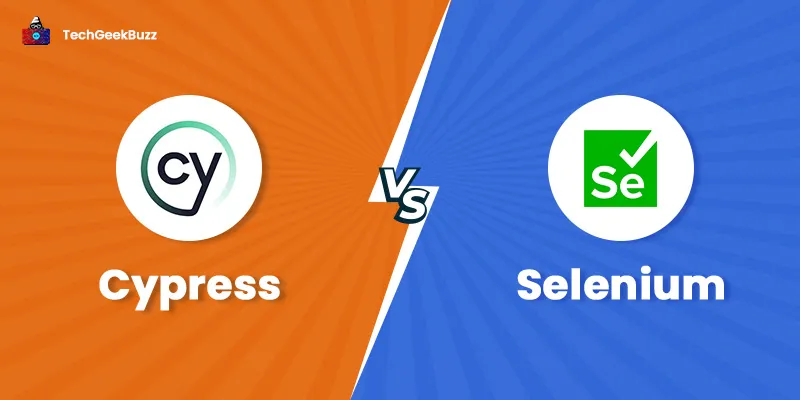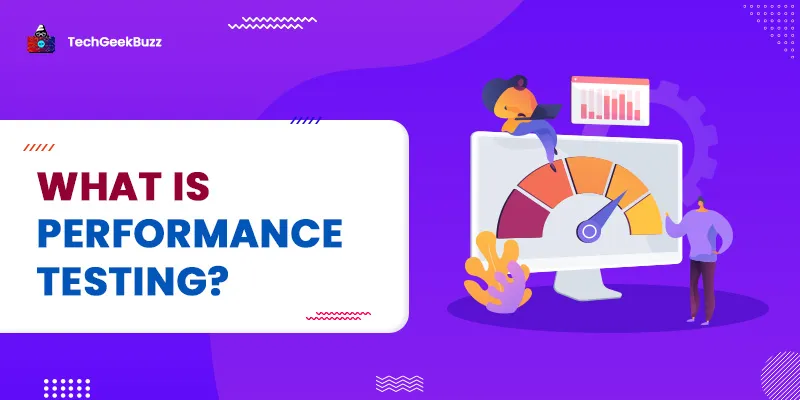When it comes to an automation framework for web application testing, Selenium is the most preferred choice because of its robust features. However, there’s another automation framework that is gaining traction, and it is none other than Cypress. This automation testing framework is grabbing massive attention from software testers.
Since Selenium vs Cypress are excellent players in the test automation game, it becomes pretty confusing to make a choice between them. Selenium and Cypress are both open-source automation tools for testing web applications. However, both these tools have their own strengths and weaknesses.
If you are perplexed in making a choice between Cypress and Selenium, this article is for you.
Here, we will discuss the key differences between Cypress and Selenium so that you can make a better decision. Also, we will walk you through the features, benefits, and limitations of each tool.
So, let us get started to understand the comparison between Cypress vs Selenium.
What is Cypress?
Cypress is an open-source, end-to-end framework for carrying out automaton testing on web applications. It is a JavaScript-based, next-generation front-end testing tool for anything that runs in a browser. In addition, it is a cross-browser-compatible framework that supports various browsers, including Google Chrome, Firefox, Edge, Brave, and Electron.
This tool intends to overcome the obstacles that test engineers face while testing modern web applications. These obstacles may include synchronization issues, inconsistencies in tests, etc.
Furthermore, this framework allows you to write powerful and flexible tests for your web applications. Along with end-to-end testing, Cypress also supports unit testing and integration testing.
The best part of this framework is that it is developed using JavaScript, which is one of the most preferred languages among front-end developers. Therefore, we can say that this tool is specially designed to cater to the needs of front-end developers.
Moreover, Cypress comes with Cypress Test Runner and Cypress Dashboard. The Cypress Test Runner lets you write tests locally, and Cypress Dashboard allows you to record your test cases and their corresponding results.
Features
The following are the salient features of Cypress:
- Time Travel: This feature allows you to capture snapshots as your run tests. You simply need to hover over a command in the Command Log, and it displays everything happening at each step.
- Debugging: You can debug your test with Chrome DevTools. Cypress makes debugging extremely fast since it provides readable errors and stack traces.
- Real-time Reloads: Whenever you make any changes to the test, Cypress automatically reloads. You can watch those tests executing in your application under test.
- Automatic Waiting: There is no need to add wait or sleep to your tests. Cypress automatically waits for commands and assertions before proceeding forward.
- Test Status Menu: It displays the failed and passed test cases and the time required to run them.
- Browser Menu: It lets you select a browser in which you want to run your tests.
Advantages
Some remarkable advantages of Cypress are as follows:
- Cypress is a cross-platform web automation tool compatible with Windows 7 and above, Fedora, Linux, Debian, and macOS.
- As you write commands, Cypress executes them in real-time and provides visual feedback.
- Unlike all other open-source web automation tools, Cypress enables you to perform API testing.
- It supports unit testing, integration testing, and end-to-end testing.
- Cypress does not simulate the browser. Instead, it works on a real browser.
- Setting up a test environment in Cypress is effortless.
Disadvantages
Here are some notable drawbacks of Cypress:
- You cannot drive two browsers at the same time using Cypress.
- It does not support multiple tabs.
- Besides JavaScript, it does not support other languages for writing test scripts.
- Cypress does not provide support for two popular browsers, namely Safari and Internet Explorer (IE).
- It offers limited support for iFrames.
- You cannot automate mobile browser testing using Cypress.
What is Selenium?
Selenium is an open-source test automation tool that automates web browsers. In other words, this tool helps you test your web application in any browser. Also, Selenium has been the first choice of many front-end developers for over a decade. It is not a single tool; rather, it is a suite of libraries and tools that facilitate browser automation.
There are three different components of Selenium that are as follows:
- Selenium WebDriver
The Selenium WebDriver is a collection of language bindings and the implementations of individual browser controlling code. It enables you to create browser-based regression automation test suites that run in any browser. It leverages Selenium Server to drive your browser natively, either locally or on a remote machine, to run test scripts.
- Selenium IDE
The Selenium IDE is an open-source record and playback tool for creating functional tests without the need to learn any test scripting language. It uses a test domain-specific language called Selenese, which allows you to author tests in various programming languages. These programming languages include JavaScript, Java, PHP, Perl, Python, C#, Ruby, and Scala.
- Selenium Grid
The Selenium Grid lets you distribute and run WebDriver scripts on remote machines. Therefore, it provides an easy way to run multiple WebDriver test scripts on multiple machines.
Features
The following are the notable features of Selenium:
- Remote Execution: Selenium enables you to execute test scripts on remote virtual or real machines. Selenium Grid routes the commands from the clients to the remote browser instances.
- Parallel Test Execution: With Selenium, you can run multiple automation scripts simultaneously on various local or remote machines.
- Handle Dynamic Web Elements: Selenium WebDriver eliminates the hassle of handling dynamic web elements, such as alerts, checkboxes, dropdowns, and many more. With the help of XPath, ID, class, and name, it becomes easy to handle dynamic web elements.
- Run All: The Run All feature of Selenium IDE allows the execution of the entire test suite at once.
- Locating Web Elements: Selenium WebDriver comes with various locators to find web elements on a web page. Some of the most common locators are name, ID, XPath, TagName, CSS Selector, LinkText, and PartialLinkText.
- Record and Playback: Selenium IDE offers the feature of record and playback, which records the test cases by understanding the user’s interaction with a website or web application.
Advantages
The noteworthy benefits of Selenium are as follows:
- Selenium is a cross-platform tool compatible with Windows, Linux, and macOS.
- It is compatible with all the modern browsers, including Google Chrome, Safari, Edge, Firefox, and Internet Explorer.
- It provides you with the flexibility to choose a programming language of your choice, including JavaScript, Java, Python, PHP, Ruby, C#, and Scala, to write tests.
- The parallel test execution reduces time and enhances the efficiency of tests.
- It can easily integrate with Jenkins and Maven. Thus, it is very useful in continuous integration .
- You can use Appium with Selenium to perform automation testing on mobile web applications.
- Selenium supports headless browser testing.
- It requires fewer resources as compared to other web automation testing tools.
Disadvantages
The following are the major downsides of Selenium:
- Selenium does not provide a good reporting feature. It has to rely on other tools, such as Cucumber or TestNG.
- You cannot automate barcodes or captchas using Selenium.
- It is not good at handling page load and synchronization issues.
- It does not support testing images, videos, and audio.
- Unlike Cypress, it does not support unit testing or integration testing .
- Creating test cases in Selenium is a time-consuming process.
- When compared to Cypress, setting up a test environment in Selenium is pretty difficult.
Cypress vs Selenium: Head to Head Comparison
The following table helps you understand how Cypress vs Selenium differ from each other:
| Parameters | Cypress | Selenium |
| Supported Programming Languages | Cypress only supports JavaScript. | Selenium supports various programming languages, including JavaScript, Java, Python, PHP, Scala, Ruby, Groovy, and C#. |
| Browser Support | This tool supports Brave, Google Chrome, Microsoft Edge, Electron, and Firefox. | This tool supports Google Chrome, Safari, Internet Explorer, Microsoft Edge, and Firefox. |
| Supported Operating Systems | It supports Linux, Fedora, Debian, macOS, and Windows operating systems. | It supports Windows, macOS, and Linux operating systems. |
| Multi-tab Support | Cypress does not support multiple tabs. | Selenium supports multiple tabs. |
| Multiple Browser Instances | This tool does not support multiple browser instances. | Selenium supports multiple browser instances. |
| Automatic Waiting | There is no need to manually add wait or sleep in the tests. Cypress waits for assertions and commands automatically before proceeding to the next instruction. | It does not support automatic waiting. |
| Screenshots and Videos | Cypress automatically captures screenshots on failure, and a video of the entire test suite when you run them headlessly. | Selenium does not provide any automatic screenshot and video capturing feature. Instead, you need to write code manually. |
| Mobile Testing | This tool does not support mobile testing. | With Appium, Selenium supports mobile testing. |
| Testing Framework | Cypress only supports Mocha. | Selenium supports various testing frameworks, including JUnit, TestNG, PyUnit, NUnit, Behave, JBehave, Robot, and Specflow. |
| Test Flakiness | In Cypress, the tests are expected to be non-flaky. | In Selenium, tests can be flaky. |
Cypress vs Selenium: Which is Better?
From the above comparison, we can conclude that though Cypress and Selenium are intended for automating web application testing, they both serve different purposes. While Cypress is a new entrant and growing tool, Selenium is a highly popular test automation framework.
Selenium is an ideal choice if you want to create test scripts in various programming languages and make them functional across multiple browsers and operating systems. In addition, it allows you to scale testing by executing test scripts on multiple machines simultaneously through Selenium Grid.
On the other hand, if you are proficient in JavaScript and cross-browser testing is not of the utmost importance, choosing Cypress would be a great move.
Moreover, if you are comfortable working with Selenium, there is actually no need to switch to the other web automation testing tool. However, if you are starting a new project, you can go with Cypress.
Ultimately, the choice between Cypress and Selenium depends on your skillset and the project’s needs and scope.
Conclusion
This is all about the comparison between Cypress vs Selenium. Cypress is an emergent player, while Selenium is a more mature automation testing tool. The former offers various useful features, including real-time reload, time travel, automatic waiting, automatic screenshots and videos of test suites, and excellent text execution speed.
On the flip side, Selenium provides features including remote execution of test scripts, support for cross-browser testing and mobile testing, and integration with a plethora of testing frameworks.
When it comes to cross-browser testing, Selenium is still the de-facto automation testing framework.
Frequently Asked Questions
1. Does Cypress replace Selenium?
Cypress is not a replacement or substitute for Selenium. Both these web automation testing tools serve different purposes. Selenium is a general-purpose tool, which has a broad set of audiences, while Cypress is a relatively new tool that lets you create web automation test scripts only in JavaScript.
2. Can I use Cypress for API testing?
Yes, you can use Cypress for API testing. However, Selenium does not support API testing.
3. Is Cypress hard to learn?
Cypress is extremely easy to learn, which makes it an ideal end-to-end testing tool for beginners.
4. Is Selenium hard to learn?
Selenium has a steep learning curve. As a result, beginners may face difficulties in learning Selenium.
People are also reading:



![What is Waterfall Model? [Phases, Pros, & Cons]](/media/new_post_images/Waterfall_Model.webp)
